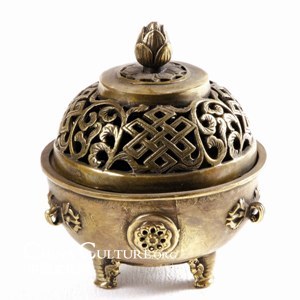![]()
|
|
|
 |
Chinese Incense Burners2009-11-11 10:06:00 From: chinaculture.org
Censing has a long history in China. Generally, people cense their clothes to show courtesy though later it became a practice favored by intellectuals. Before the Han Dynasty (206BC-AD220), incense burners made of ceramics, porcelain, brass, iron and tiles had already come into being.  Chinese incense burners are frequently made to resemble a metal or stone dish and stand on small legs. Today many cultures throughout the world use incense burner holders for religious and spiritual rituals. The design of many Chinese and Japanese incense burners are heavily influenced by religious images, such as the Buddha or Chinese gods. Many people light incense burner holders in spiritual places, such as altars, temples and sacred places and pray while they are lit. It is very common in many Asian countries to see people deep in prayer while next to a Chinese incense burner. In addition to being part of a spiritual tradition that extends back thousands of years, incense burner holders give off a pleasing fragrance that spreads across a large area. Xuande Incense Burner During the Xuande reign (1425-1434) of the Ming Dynasty (1368-1644), the making technique of bronze incense burners reached its peak. Emperor Xuande imported a batch of red copper and ordered craftsmen in the palace to design and make Xuande Incense Burners. In order to ensure good quality of these incense burners, craftsmen selected tens of precious metals such as gold and silver and fired them with red copper. The bronze incense burners they made have crystal-clear luster and are treasures of Ming Dynasty craftworks. Historical records show that 3,000 pieces of Xuande Incense Burner were made with this batch of imported red copper during the reign of Xuande. No more incense burners of this kind were made after that. These Xuande Incense Burners were kept in royal courts and ordinary people had no chance to see them. Hundreds of years later, Xuande Incense Burners made at that period became rare and what we see today is mostly imitated by people of later periods. Total:1 Page: 1
|
|
|
||||||||||||